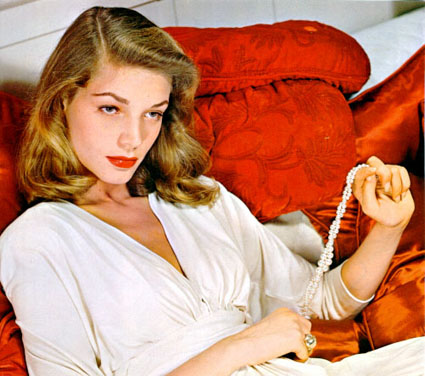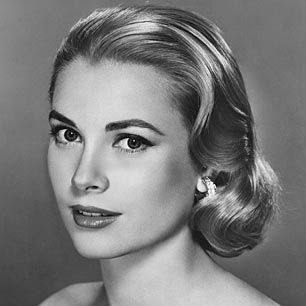Source(google.com.pk)
Old Time Hollywood
Actresses
Margarita Carmen Cansino was born on October 17, 1918 in Brooklyn, New York City into a family of dancers. Her father, Eduardo was a dancer as was his father before him. He immigrated from Spain in 1913. Rita's mother met Eduardo in 1916 and were married the following year. Rita, herself, was trained as a dancer in order to follow in her family's footsteps. She joined her family on stage when she was 8 when her family was filmed in a movie called La fiesta (1926). It was her first film appearance, albeit uncredited, but by no means was it to be her last. Rita was seen dancing by a 20th Century Fox executive and was impressed enough to offer her a contract. Rita's "second" debut was in the film Cruz Diablo (1934) at age 16. She continued to play small bit parts in several films under the name of "Rita Cansino" until she played the second female lead in Only Angels Have Wings (1939) when she played Judy McPherson. By this time, she was at Columbia where she was getting top billing but it was the Warner Brothers film The Strawberry Blonde (1941) that seemed to set her apart from the rest of what she had previously done. This was the film that exuded the warmth and seductive vitality that was to make her famous. Her natural, raw beauty was showcased later that year in Blood and Sand (1941) filmed in Technicolor. She was probably the second most popular actress after Betty Grable. In You'll Never Get Rich (1941) with Fred Astaire, was probably the film that moviegoers felt close to Rita. Her dancing, for which she had trained all her life, was astounding. After the hit Gilda (1946), her career was on the skids. Although she was still making movies, they never approached her earlier work. The drought began between The Lady from Shanghai (1947) and Champagne Safari (1954). Then after Salome (1953), she was not seen again until Pal Joey (1957). Part of the reasons for the downward spiral was television, but also Rita had been replaced by the new star at Columbia, Kim Novak. After a few, rather forgettable films in the 1960s, her career was essentially over. Her final film was The Wrath of God (1972). Her career was really never the same after Gilda (1946). Her dancing had made the film and had made her. Perhaps Gene Ringgold said it best when he remarked, "Rita Hayworth is not an actress of great depth. She was a dancer, a glamorous personality and a sex symbol. These qualities are such that they can carry her no further professionally". Perhaps he was right but Hayworth fans would vehemently disagree with him. Rita, herself, said, "Every man I have known has fallen in love with Gilda and wakened with me". By 1980, Rita was wracked with Alzheimer's Disease. It ravaged her so, that she finally died at age 68 on May 14, 1987 in New York City.
Born Deborah Jane Kerr-Trimmer in Scotland in 1921, she was the daughter of a soldier who had been gassed in World War I. A shy, insecure child, she found an outlet for expressing her feelings in acting. Her aunt, a radio star, got her some stage work when she was a teenager, and she came to the attention of British film producer Gabriel Pascal, who cast her in his film of George Bernard Shaw's "Major Barbara" (Major Barbara (1941)) and Love on the Dole (1941). She quickly became a star of the British cinema, playing such diverse roles as the three women in The Life and Death of Colonel Blimp (1943) and the nun in Black Narcissus (1947). In 1947 she "crossed the pond" and came to MGM, where she found success in films like The Hucksters (1947), Edward, My Son (1949) and Quo Vadis (1951). After a while, however, she tired of playing prim-and-proper English ladies, so she made the most of the role of the adulteress who romps on the beach with Burt Lancaster in From Here to Eternity (1953). The film was a success, and Kerr received her second Oscar nomination. She also achieved success on the Broadway stage in "Tea and Sympathy," reprising her role in the 1956 film version (Tea and Sympathy (1956)). That same year she played one of her best-remembered screen roles, "Mrs. Anna" in The King and I (1956). More success followed in Heaven Knows, Mr. Allison (1957), An Affair to Remember (1957), Separate Tables (1958), The Sundowners (1960), The Innocents (1961) and The Night of the Iguana (1964). Then in 1968 she suddenly quit movies, appalled by the explicit sex and violence of the day. After some stage and TV work in the 1970s and 1980s and swan song performances in The Assam Garden (1985) and Hold the Dream (1986) (TV), she retired from acting altogether. Kerr holds the record for the most Academy Award nominations for Best Actress without a win (six), but that was made up for in 1994, when she was given an Honorary Oscar for her screen achievements.
Doris Day was born in Cincinnati to German Catholic parents. She had two brothers, Richard, who died before she was born and Paul, a few years older. Her father and mother divorced when she was about ten. At fourteen, she formed a dance act with a boy, Jerry Doherty, and they won $500 in a local talent contest. She and Jerry took a brief trip to Hollywood to test the waters. They felt they could succeed, so she and Jerry returned to Cincinnati with the intention of packing and making a permanent move to Hollywood. Tragically, the night before she was to move to Hollywood, she was injured riding in a car hit by a train, ending the possibility of a dancing career. She discovered that she could sing, and at age 15 (but saying she was 18) began touring with the Les Brown Band, where she met trombonist Al Jorden, whom she married. Jorden turned out to be a temperamental and physically abusive husband and, soon after the birth of her son Terry in 1942, she initiated divorce proceedings. In 1946, after touring with bands, radio work, and entertaining the troops with Bob Hope, she met and married George Weidler but this union lasted only eight months. In 1948, she made her first film, Romance on the High Seas (1948), at Warner Brothers. She met Martin Melcher, who became her manager and later, on her 29th birthday, her husband. In 1958, her brother Paul died and around this time, her husband started to make her sign to do films that she did not want to make. This eventually led to her becoming ill from nervous exhaustion. By the time Martin Melcher died in 1968, Doris discovered she was millions of dollars in debt. She learned that Melcher had squandered virtually all of her considerable earnings, but she was eventually awarded $22 million by the courts in a case against a man that Melcher had unwisely let invest her money. She married for the fourth time in 1976 and since her divorce in 1980 has devoted her life to animals.
Old Time Hollywood Actresses












No comments:
Post a Comment